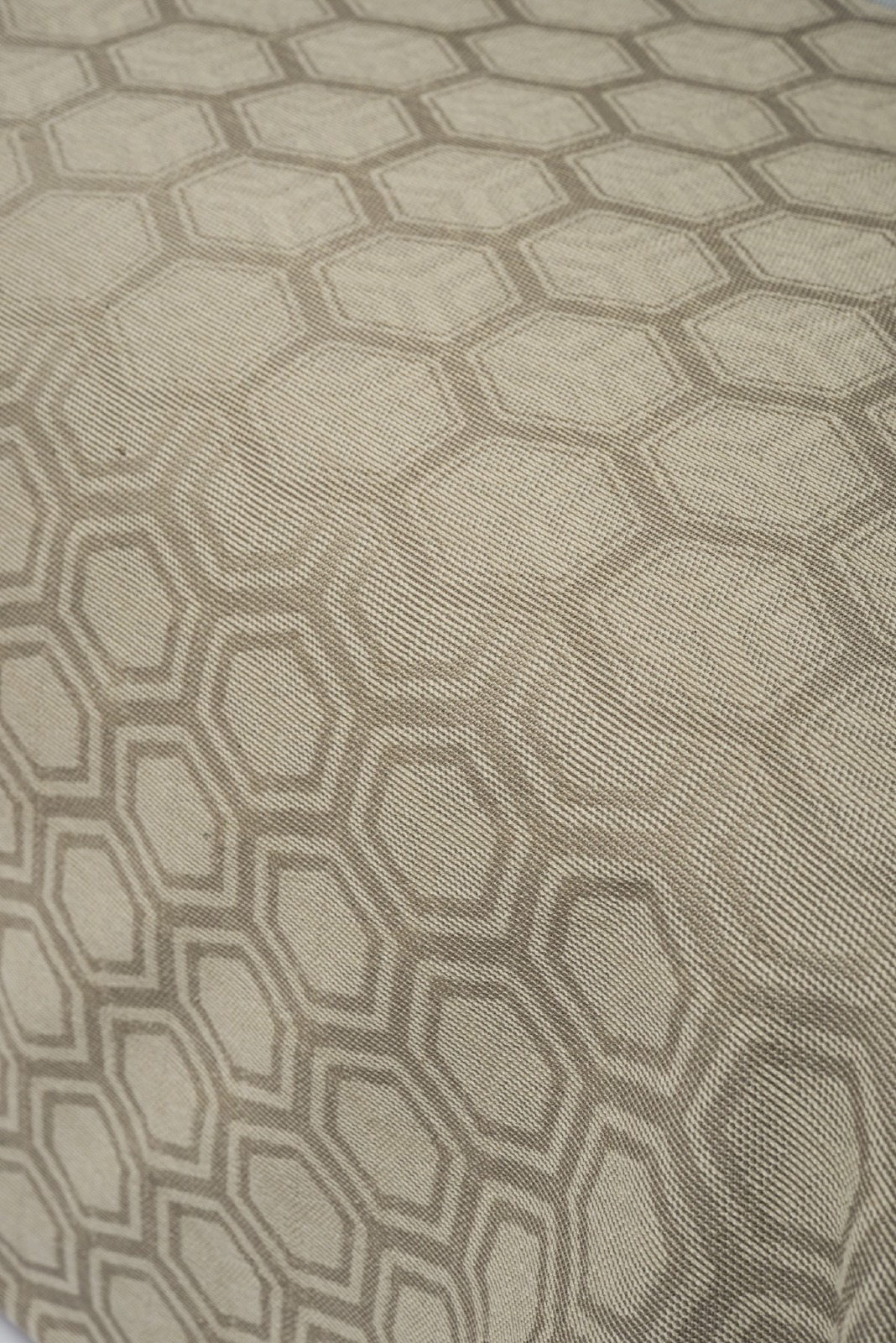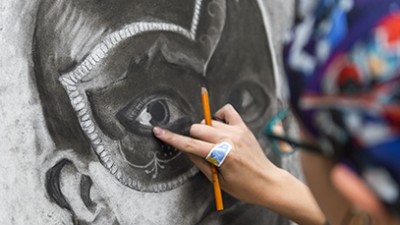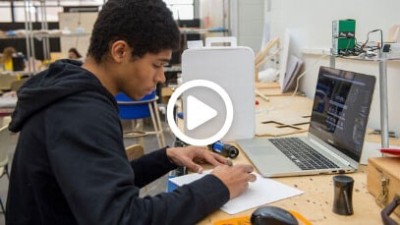Inventor of the ZEZ® Fabric
Who is Wanda Miglus?
Making mistakes can lead you to great industry and artistic success. Just ask Wanda Miglus '82 (Environmental Design), the inventor of ZEZ® textile, a fabric that morphs from one design to another with a change of perspective. ZEZ can be found enhancing aircraft, yacht and coach interiors. It can also be found on RIT's very own campus.
Miglus graduated from the RIT College of Art and Design in 1982 with a BFA from the Environmental Design Department (now Industrial Design) and went on to get her MFA from the Rhode Island School for Design, where she specialized in Woven Textile Design. She currently resides in Providence, Rhode Island.
After graduating, Miglus started her design career at Dansk International Designs, Ltd. where she had the pleasure of working on both the interior designs of their retail outlets and their New York showroom, and in product development.
"I honed my drafting and production drawing skills at this job and had the opportunity to learn from the master Scandinavian designers working Dansk at the time," said Miglus, of people she looked up to.
After Dansk, she went to work for Niels Diffrient as a model maker before moving onto the traditional silversmithing company, Towle. While at Rhode Island School of Design, she continued working as a product designer for Fetco, a photo frame company. After completing graduate studies, she worked for mills, both in the south and in New England, Connecticut, developing woven textiles for automotive interiors.
"To support myself while my businesses were developing for ten years, I worked as an art administrator and grantmaker at the Rhode Island Community Foundation," she added.

Q&A with Wanda Miglus
Working as a creative director in the textile industry requires a lot of imagination. What inspires you?
I often look to science for inspiration. Applied physics was often dinner conversation in my youth so I gravitate to visual interpretation of the sciences. With reference images being so readily available today, it is more a matter of filtering inspiration. Limitations serve to force me to slow down and really look so I make sure to keep great picture books on hand and use my camera to record and study details. The nature of my fabric design also requires me to constantly consider relationships between images, shapes, surfaces, textures and so on. So, I look to examples of how things relate in the created and natural environment.
How did you come up with the idea of ZEZ fabric idea?
ZEZ fabric was born of a happy accident. It started out as a class assignment when I was learning to weave complex structures at RISD. I made two mistakes in the process of trying to create a multilayer fabric and the layers fused and ZEZ happened. The challenge was to figure out what I had done and recreate it.
That must have been an amazing feeling when you figured it out. What would you say is your favorite thing about ZEZ® fabric?
Even though I have been living with ZEZ fabric for many years, I still get a thrill from its magic. I often catch myself thinking, "Wow, it did it again". I particularly like seeing peoples faces burst into smiles when they see the effect for the first time and they get excited and start asking questions.
You were given the 2004 ICFF (International Contemporary Furniture Fair) Award for Textiles. Is this still one of your greatest accomplishments? If not, what else have you accomplished and are very proud of?
The ICFF award was very important, but not so much as an accomplishment, but as a validation. At a make or break moment it encouraged me to continue working to develop my fabric beyond concept stage and get it into production, which took a few more years. I treasure the ICFF award, but the thing I am most proud of is sticking with the process of developing the fabric. I didn’t start out equipped to be an entrepreneur, but my passion for making this beautiful and amazing fabric kept me committed. Now I have both the satisfaction of running my own company and creating my own designs.
Are you a one-woman team at ILOROM? What is the creative process like?
On the design front, yes I am, though I call on trusted colleagues to give me input at critical points. Also, recently a colleague has started managing the business operations which has been amazingly helpful. We have adopted a stricter project management process and having experienced business assistance has freed me up to focus on design. With the launch of my first signature line, the design process has been intense this year, coming up with the design concepts, working with the mill to develop the product line and also always considering how the designs meet my market targets. Having a good working relationship with the mill is vital as is clear communication. Designing woven textiles is a very complex process, so it is important that the details of the process are clearly described and that there is two-way feedback. I do some of the designing on the computer, but I still sketch and paint by hand which I find really satisfying.
What would you say was your favorite part of CAD that aided you in your career?
A year ago I visited RIT because I found out that my fabric is in use on the campus in two areas and I wanted to see it. I hadn’t been back on campus for many years and was pleased to see all the growth that has taken place. It feels good knowing that my work has come home to its nest. RIT’s reputation for excellence has stood in my favor, but it was the mash-up of design, fine arts, crafts, photography along with the other disciplines that I experienced that was so rich. I still can draw a direct line between certain skills or know-how to specific instructors and experiences I had at CAD.
Any advice for students of similar design backgrounds who may look up to you and aspire to be in a similar position someday?
Yes, two things. First, trust the process to reach solutions. I don’t believe I would have discovered my fabric had I not been a product designer first because that approach made me curious about structure over pattern. The other thing is don’t be shy about asking for help or mentorship. I was and that made my path much steeper. Get in the habit of asking lots of questions and for direction toward your objective early on and often. By doing this you will sharpen your instincts, find champions and your ideas will grow in interesting ways.
—
To learn more about Wanda Miglus' company, ILOROM, visit the company's website.









